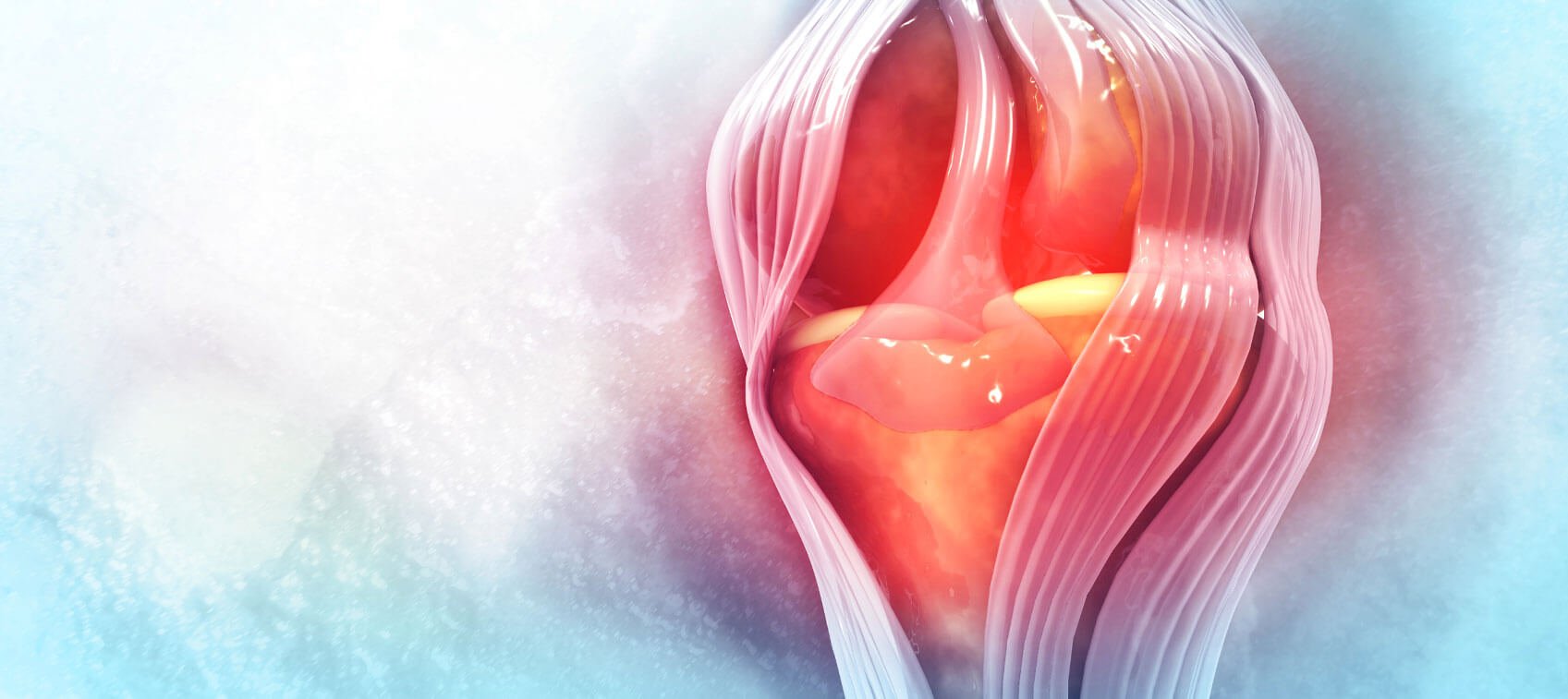
Over the years, there has been a lot of debate as to whether our bodies have the capability to repair and regrow damaged joint cartilage.
It seems that most scientists outrightly dismissed the idea based on the fact that mature cartilage doesn’t have a blood supply. Without a blood supply, it was believed there was no way the body could supply joint cartilage with the necessary raw materials to enable it to regrow.
Yet, others have seen or personally experienced very meaningful changes in joint health when certain protocols and diet have been followed.
Will Cartilage Grow Back?
Research on joint cartilage has been extensive. For decades, researchers have been able to successfully regrow cartilage in the laboratory. However, it has been far more challenging transferring these techniques to actual living joints.
One procedure, called microfracture surgery, involves drilling small holes in the bone directly underlying joint cartilage. This creates a “super clot” of blood and stem cells in the area, with the goal of triggering cartilage regrowth.
Results have been mixed, and any positive results seem short-lived. In the best cases, there’s some cartilage regrowth, but there is often accompanying bone regrowth that complicates matters. Furthermore, the cartilage is often fibrous cartilage instead of the hyaline cartilage that normally grows on joint surfaces.
Another procedure utilizes the same microfracture surgery followed by a procedure to “glue" a hydrogel-like scaffolding to the joint surface. The results appear to be better than microfracture surgery alone. With just the microfracture surgery, the initial pain reduction patients experience lasts only about three months. Those who have received the gel scaffolding reported less pain even at six months.
But here’s the good news: New research confirms we do have the ability to restore cartilage in our joints!
When I was a kid, one of my favorite things to do was catch salamanders, which magically seemed to appear after heavy rain. Salamanders are unique in their ability to regenerate limbs. And while complete limb regeneration hasn’t been seen in humans, researchers at Duke University found we do have regenerative capacity when it comes to joint cartilage.
When researchers analyzed key proteins found in the joint cartilage of humans, they found “young” cartilage cells in the joints of the ankles, “middle-age” cartilage cells in the knee joints, and “old-age” cartilage in the hip joints. In other words, the age of the joint cartilage was directly related to where it was located in the body.
This correlates with how limb regeneration occurs in certain animals. In salamanders and other creatures that regenerate limbs, the process is more prevalent in the furthest tips, such as the ends of legs or tails. It also explains why ankle injuries heal quicker and are rarely arthritic, while knee and especially hip injuries take longer to heal and often develop arthritis.
It appears that molecules called microRNAs regulate this healing and regenerative process in animals. And our bodies have those same molecules. If we figure out how to “boost” or safely turn on these regulators, we may even be able to regenerate limbs as well, or at least rebuild damaged joints.
This is exciting new research that still has a ways to go. But in the meantime, there are methods to help slow joint deterioration and take advantage of the body’s innate ability to restore joint cartilage.
Physical Steps to Restore Joint Cartilage
First and foremost, it’s important to limit high-impact damage to joint cartilage.
Activities like jogging, jumping from high objects, and impact sports may be fine for younger people, since joint cartilage, ligaments, tendons, and other structures are more flexible and forgiving. But as we get older, the pounding places undue stress and damage on joint cartilage. That’s why you would be hard-pressed these days to find an older professional football player who doesn’t have severe joint problems and/or a joint replacement.
Additionally, obesity places constant and unnecessary stress on the joints, which is increased even more when walking or doing upright activities. Losing even a few pounds of excess weight can make a profound difference in both joint pain and long-term joint health.
Likewise, it’s important to move every joint in the body through its complete range of motion every day. Since cartilage doesn’t have a blood supply like other living tissues, it must receive its nutrients and remove any waste material by way of the synovial fluid within the joint capsule. Range-of-motion exercises help ensure this synovial exchange of fluid occurs regularly over the entire joint surface.
Regular exercise is essential for joint health too. Exercises that don’t unduly compress joint cartilage can help preserve joint mobility and stability, and overall circulation. Exercise also helps decrease stress hormones and inflammation throughout the body.
Some of the best exercises for joint restoration include walking, swimming, stretching, and weightlifting. In fact, weightlifting strengthens the muscle ligaments that stabilize joints, decreasing abnormal shearing stress to joint cartilage. It can also increase overall mobility, circulation, and the density of the bones underlying joint surfaces.
Reducing Inflammation Restores Joint Cartilage
Inflammation commonly accompanies or contributes to the destruction of joint cartilage. One of the biggest causes of inflammation is an imbalance of omega-6 fatty acids in relation to omega-3 fatty acids. Omega-6s are inflammatory by nature, while omega-3s are anti-inflammatory. We need both, but in the right balance.
An overabundance of omega-6 fatty acids can lead to inflammation in the joints and throughout the body. In this country, vegetable oils (corn, soy, sunflower, canola, etc.) are our most abundant source of omega-6s. Overconsumption causes the omega-6 to omega-3 ratio in most Americans to be around 20:1. Ideally, it should be closer to 2:1.
You can fix this imbalance by limiting (or eliminating) your consumption of vegetable oils and processed foods that contain them, while at the same time including omega-3-rich foods like fish (salmon, mackerel, tuna, sardines), walnuts, flaxseed, olive oil, and chia seed to your diet.
Sardines probably give you the most bang for the buck. They are inexpensive, safe from heavy metals like mercury, and are loaded with RNA. A can or two a week can work wonders for inflamed joint cartilage. (However, if you have gout, avoid sardines due to their high purine levels.)
Other good anti-inflammatory foods include:
- Green tea
- Berries
- Tart cherries
- Pomegranates
- Green leafy vegetables
- Cruciferous vegetables
- Avocados
- Bell and chili peppers
- Mushrooms
- Grapes, particularly red and darker skinned varieties
- Celery
- Beets
- Ginger root
- Cocoa
- Garlic
- Onions
- Coconut oil
- Turmeric
Hydration Is Important
It is often overlooked that the cushioning ability of joint cartilage is directly related to its water content.
Somewhere between 70–80% of joint cartilage is made up of water. A protein called aggrecan, a proteoglycan in cartilage, reacts with water to form a shock-absorbing, gel-like compound. Without adequate amounts of water, proteins like aggrecan aren’t able to form the protective cushioning gel needed within the joint capsule. This gel allows the joint cartilage to withstand compressive loads. Without it, joint cartilage is damaged.
It has been estimated that as much as 75% of our population suffers from chronic dehydration. As such, it should come as no surprise that a large percentage of the population suffers from joint problems.
Raw Materials for Restoring Joint Cartilage
Along with quelling inflammation and staying hydrated with clean, pure water, you need to make sure your diet and supplement program are providing the proper raw materials to feed your joint cartilage.
Bone broth, prepared from the carcasses and bones of cattle, pork, lamb, wild game, chickens or fish, is the “superfood for super joints.”
Powdered gelatin also contains high levels of collagen, amino acids, and minerals that are essential to joint cartilage. I recommend taking a couple of tablespoons daily.
Unpasteurized dairy products from grass-fed animals contain two compounds: Activator X and the Wulzen anti-stiffness factor. Both of these can be destroyed with excessive heat during the pasteurization process. But there is an unpasteurized product called X-Factor Gold Concentrated Butter Oil that contains these joint-saving compounds.
Finally, a daily multinutrient provides the minerals essential for joint restoration. I also recommend taking a specially formulated joint product created with ingredients that support joint cartilage health and repair.
The research shows that we can improve and prevent, or at the very least greatly delay, many of the joint cartilage problems our society is now experiencing. Understanding that cartilage is unique living tissue that has specific needs is the first step of the process. Catering to these needs with the proper exercise, diet, and supplementation are the best ways to live a more pain-free, mobile, and independent lifestyle.


